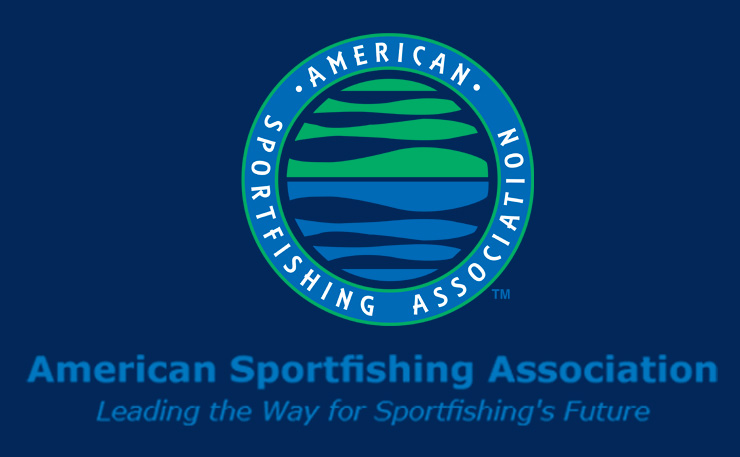Alexandria, VA – June 25, 2018 – The American Sportfishing Association – the sportfishing industry’s trade association – announced the launch of a new project to improve the survival of caught-and-released fish in the South Atlantic, as part of the FishSmart program.The new FishSmart Red Snapper and Red Drum Conservation Project seeks to promote best practices for releasing fish and encourage greater awareness and use of tools proven to improve fish survival. Working in partnership with state fish and wildlife agencies, industry and other organizations, descending devices for deep water fish and short leader rigs for red drum will be distributed to anglers throughout the region, along with best practices for handling and releasing fish. Through participant surveys, valuable information will be gathered on the use of these tools and techniques that can help form better management decisions in the future.
In the Gulf of Mexico and South Atlantic, many reef fish such as red snapper are being released due to short seasons and high rates of encounter. Without proper handling techniques a significant percentage of released fish die, to the detriment of fisheries conservation and future fishing opportunities.
“We’re always working on ways to help increase fish survival rates and showcase the work anglers and industry do as conservationists,” said Mike Leonard, ASA’s Conservation Director. “The aim of FishSmart is to further bolster the recreational fishing community’s stewardship of the fisheries we enjoy. Through education and awareness, we expect to make a positive impact on fish populations and keep these fisheries robust for years to come.”
This South Atlantic project builds upon the success of a similar FishSmart project recently conducted in the Gulf of Mexico. From 2015 to 2017, the program – coordinated through ASA’s FishAmerica Foundation – recruited more than 1,100 anglers to use best practices for saltwater catch and release, which included the use of descending devices, such as the SeaQualizer – a tool that rapidly returns fish to the depth in which they were caught, allowing them to reacclimate for a successful release.
It’s estimated that 3,000 to 9,000 red snapper lowered to their original depth survived because of the descending device. The survival rate of the approximately 22,000 reef fish, or other species that anglers reported releasing, was also improved.
“We learned a great deal about anglers and their habits, techniques and overall viewpoints during FishSmart’s initial launch,” said Martin Peters, senior manager of Communications and Government Relations at Yamaha Marine Group – one of the program’s chief supporters. “By showing how increased use of best practices for releasing fish can lead to healthier fisheries, we are not only promoting fisheries conservation but also allowing for greater fishing opportunities. With healthy fisheries, everybody wins.”
Nearly 75 percent of participants in the Gulf of Mexico project had no prior knowledge of descending devices and shared that they are now likely to use the devices to release most or all fish, when needed. This finding suggests that with education and the proper gear, anglers are empowered to make a positive impact on marine fisheries.
The renewed FishSmart program will begin with 1,500 to 2,000 project participants in the South Atlantic region. These anglers will report their catches and best practice release techniques using distributed descending devices and short leader rigs via survey.
This program is possible in part through partnerships with: FishAmerica Foundation; Florida Fish and Wildlife Conservation Commission; Georgia Department of Natural Resources; Grey’s Reef National Marine Sanctuary; NOAA Marine Fisheries; North Carolina Department of Environmental Quality; Recreational Boating & Fishing Foundation; South Atlantic Fishery Management Council; South Carolina Department of Natural Resources; and Yamaha Marine Group.
To learn more about the FishSmart Red Snapper and Red Drum Conservation Project, visit www.TakeMeFishing.org/FishSmart.
The American Sportfishing Association (ASA) is the sportfishing industry’s trade association committed to representing the interests of the sportfishing and boating industries as well as the entire sportfishing community. We give the industry and anglers a unified voice when emerging laws and policies could significantly affect sportfishing business or sportfishing itself. ASA invests in long-term ventures to ensure the industry will remain strong and prosperous, as well as safeguard and promote the enduring economic, conservation and social values of sportfishing in America. ASA also gives America’s 46 million anglers a voice in policy decisions that affect their ability to sustainably fish on our nation’s waterways through Keep America Fishing®, our national angler advocacy campaign. America’s anglers generate more than $48 billion in retail sales with a $115 billion impact on the nation’s economy creating employment for more than 828,000 people.

